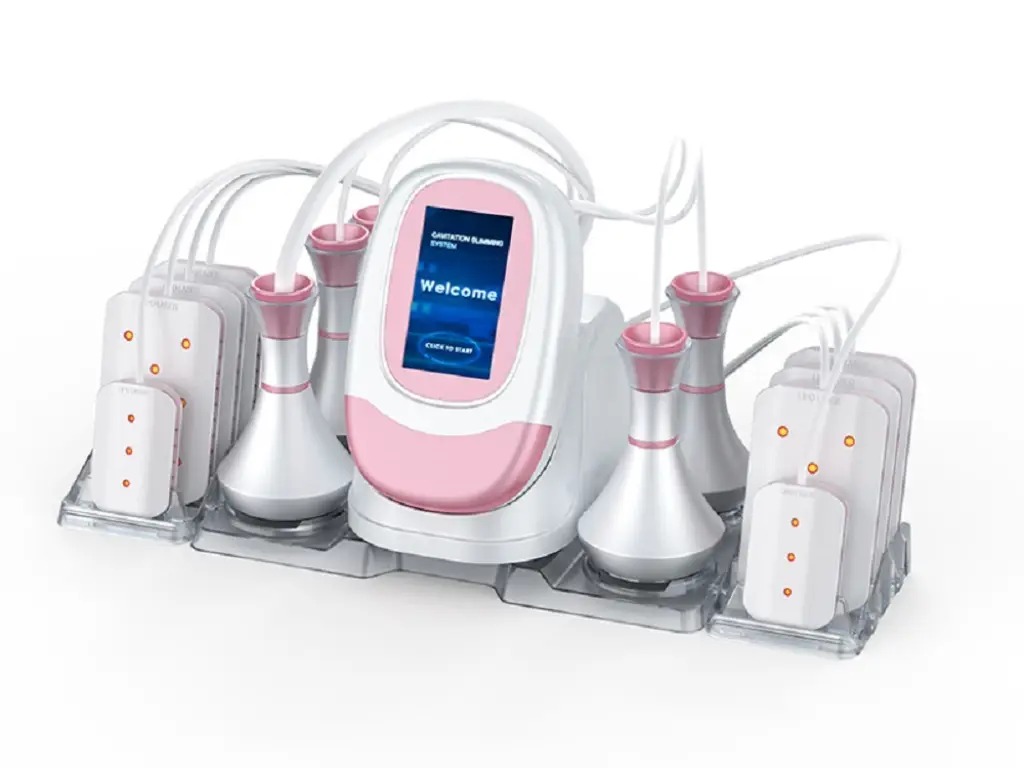Cavitation treatments are becoming a well-liked, non-invasive technique for body sculpting and fat removal. The range of cavitation machines on the market increases along with demand. A crucial choice for everyone considering these devices, whether pros or amateurs, is whether to have a stationary or portable cavitation machine. Every kind has unique benefits and things to keep in mind.
To assist you in making an informed decision based on your unique needs and circumstances, this article will examine the essential elements to consider when deciding between portable and fixed cavitation machines.
Comprehending Cavitation Machines
Cavitation devices utilize low-frequency ultrasonic waves to create bubbles inside fat cells. These imploding bubbles break the fat cell layers, and the body then normally gets rid of them. This strategy is a desirable substitute for surgical fat reduction techniques like liposuction since it is non-invasive, easy, and requires no recovery time.
Transportable Cavitation Gadgets
Portable cavitation devices are lightweight and simple to store and move. They are as a rule utilized by pros who offer mobile services in tiny clinics or homes.
- Versatility: The main benefit of portable cavitation machines is their capacity to be moved around. These contraptions are lovely portable, which makes them perfect for individuals who need to travel or for portable beauty therapists.
- Space-efficient: Because portable devices are smaller, they can be used in homes or smaller clinics where available space may be at a premium.
- Cost-Effective: Portable cavitation equipment is generally less expensive than its stationary equivalent. This reduced price may be beneficial for start-up companies or frugal individuals.
- Flexibility: Professionals can increase their business reach by providing services in multiple locations, such as clients’ homes or different clinic branches, using portable equipment.
Considerations for Portable Cavitation Machines
- Power and features: Compared to stationary machines, convenient machines may have less highlights and less power. This restriction may affect the adequacy of the treatment, especially for bigger or more recalcitrant fat stores.
- Durability: Because of their little measure and visit development, convenient machines may not be as robust as stationary machines. For the device to outlive visit transportation, it must be sturdy and well-built.
- Treatment Scope: Because portable machines may have a smaller treatment area, covering more extensive body parts may take longer.
- Mobile Cavitation Devices: Larger, more robust machines made to stay in one place are known as stationary cavitation machines. Well-established clinics, spas, or healthcare facilities usually employ them.
Benefits of Stationary Cavitation Machines
- Power and Efficiency: Generally speaking, stationary machines have more power and sophisticated features, which result in faster and more efficient treatments. They are also more effective at managing bigger and more resistant fat deposits.
- Durability: Static machines are a wise investment for busy clinics or spas because they are made to stay in one place and are frequently more robust and long-lasting.
- Advanced Features: A variety of advanced features, including various handpieces for different treatment locations, integrated cooling systems for improved patient comfort, and adjustable frequency and intensity settings, are frequently included with stationary cavitation machines.
- Professional Image: Having a stationary machine in a spa or clinic might give clients the impression that the establishment is more professional, which may increase their trust in the efficacy of the treatments.
Aspects to Consider Regarding Cavitation Machines
- Cost: Generally, stationary machines are more costly than portable ones. They are a considerable investment because of the improved features, increased power, and durability that come with the higher cost.
- Space Requirements: These machines need more room, which could be a problem for smaller clinics or those with fewer treatment rooms.
- Inability to move: Stationary machinery is made to remain in one location. This lack of mobility may be a drawback for professionals who want to work in numerous places or offer mobile services.
Essential Things to Think About When Selecting Cavitation machine
Considerations for choosing between stationary and portable ultrasound cavitation machines include the following:
- Intended Use: Determine the machine’s intended purpose, including whether it will be stationary or if mobility is crucial to your business strategy. A portable gadget might be more advantageous for people who work as mobile therapists or who intend to provide at-home treatments.
- Budget: Consider how much you’ll need for both the original buy and continuing upkeep. In spite of the fact that portable machines tend to be less expensive, stationary machines may provide the next return on investment since of their modern highlights and durability.
- Space Availability: Assess the sum of space accessible in your home or clinic. If there is little space, a portable computer might be a preferable choice. On the other hand, larger stationary equipment will fit easily in a large clinic.
- Demand for Treatment: Assess the number and kind of treatments you want to provide. A permanent machine’s efficiency and power may be necessary for high-demand clinics, but a portable unit may be adequate for individuals or low-volume practitioners.
- Patient Comfort and Outcomes: Consider the comfort and outcomes you hope to offer your customers. High-end clinics and spas may find that stationary machines with cutting-edge features that improve patient comfort and treatment outcomes are the difference makers.
In summary
Every portable and stationary cavitation machine has its own set of benefits and things to keep in mind. By carefully considering your needs, budget, and long-term objectives, you can select the ideal equipment that fits your career ambitions and your client’s expectations.
Investing in a high-quality cavitation machine can improve your practice and provide your customers with noninvasive, efficient fat removal options, regardless of whether you prefer the portability of a portable device or the strength and longevity of a stationary machine.
